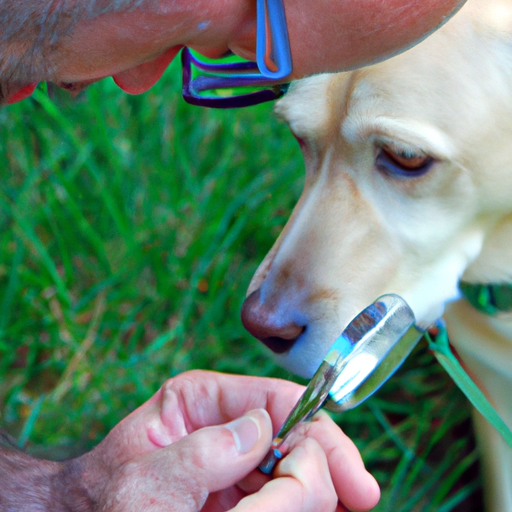As a dedicated caregiver, you know that your dogs are more than just pets; they are members of your family. That’s why it’s crucial to be prepared when it comes to dealing with common canine problems such as tick infestations.
1. Understanding Ticks and Their Dangers
Ticks are more than just pesky parasites. They are carriers of various diseases that can severely affect your dogs.
- Lyme disease: This is one of the most common tick-borne diseases that can cause joint inflammation, swelling, and fever in dogs.
- Anaplasmosis: Also transmitted by ticks, this disease can result in symptoms like lethargy, joint pain, and nervous system disorders.
| Illness | Symptoms |
|---|---|
| Lyme Disease | Joint inflammation, swelling, fever |
| Anaplasmosis | Lethargy, joint pain, nervous system disorders |
2. Tick Prevention is Better Than Cure
Preventing ticks from latching onto your dogs in the first place is the best way to protect them from potential diseases.
- Tick Collars: These specially designed collars repel ticks and are an easy preventive measure.
- Regular Grooming: Regular baths and brushing can help you spot ticks early before they have a chance to cause harm.
- Pest Control: Keeping your yard clean and free from overgrown grass can reduce the tick population in your home environment.
3. How to Spot a Tick
Your ability to spot a tick quickly can make all the difference. Ticks tend to latch onto warm, hidden areas on your dog’s body. Regularly check behind the ears, between the toes, and around the tail area.
4. Safe Tick Removal
If you find a tick, don’t panic. Follow these steps for safe tick removal:
- Prepare Your Tools: You’ll need a pair of tweezers or a special tick removal tool, gloves, and antiseptic.
- Remove the Tick: Grasp the tick close to the dog’s skin and pull up with steady, even pressure. Do not twist or jerk as this could leave parts of the tick in the skin.
- Clean the Area: After removal, clean the area with antiseptic to prevent infection.
5. Post-Removal Care and Monitoring
After removal, keep a close eye on the bite area for a few days. If you notice any signs of infection, such as redness, swelling, or your dog seems to be in pain, contact your vet immediately.
Frequently Asked Questions (FAQ)
Q: How long can a tick live on a dog?
A: A tick can stay on a dog for up to 3-5 days.
Q: Can ticks infest my home?
A: Yes, ticks can infest homes, especially if they have been brought in by a pet.
Q: What should I do if my dog has a lot of ticks?
A: If your dog has many ticks, it’s best to consult a veterinarian for professional help.
Remember, as a caregiver, your vigilance can ensure the well-being of your furry friends. Stay informed, stay prepared, and keep those tails wagging!



